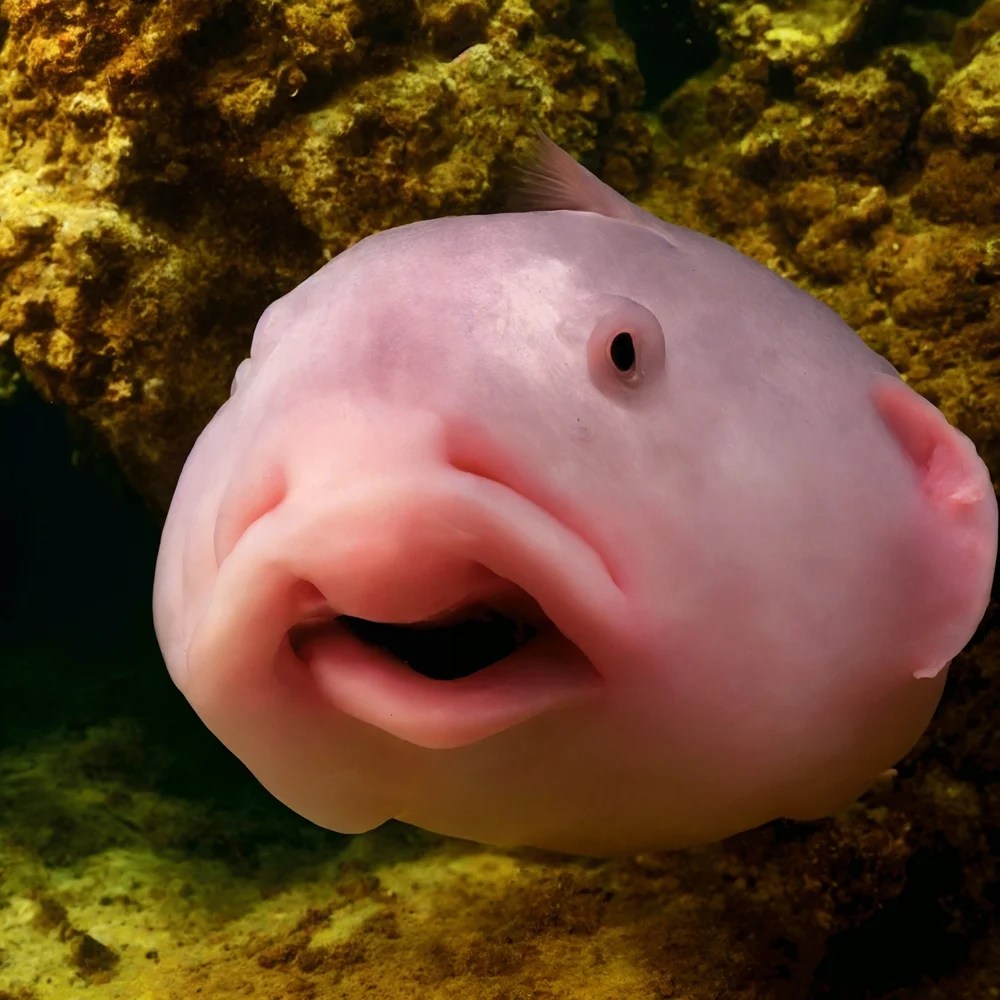When we think of the ocean's inhabitants, we often envision sleek dolphins or majestic whales. However, lurking in the depths of the sea is a creature that has captured the attention of many due to its unique appearance – the blobfish. Known scientifically as Psychrolutes marcidus, the blobfish is often described as the "world's ugliest fish," but it has much more to offer than just its unconventional looks. This gelatinous fish thrives in the deep waters off the coasts of Australia and Tasmania, and its existence raises intriguing questions about adaptation and survival in extreme environments.
The blobfish is not just a face only a mother could love; it represents a fascinating example of how life can evolve in the harshest conditions. With its soft, gelatinous body, the blobfish is perfectly adapted to the high-pressure environment of the deep sea, where traditional fish might struggle. As we dive deeper into the world of the blobfish in water, we will uncover its behaviors, habitat, and the misconceptions that surround it, leading us to appreciate this unusual creature beyond its appearance.
In this article, we will explore a variety of aspects of the blobfish, including its biology, the significance of its habitat, and the environmental challenges it faces today. By shedding light on these topics, we hope to foster a greater understanding of this unique fish and encourage conservation efforts to protect its underwater home. So, what exactly makes the blobfish in water so special? Let’s dive in and find out!
What is a Blobfish?
The blobfish is a deep-sea fish that resides at depths of around 600 to 1,200 meters (about 2,000 to 3,900 feet) in the waters off Australia and Tasmania. Its appearance is characterized by its gelatinous, blob-like body, which is primarily composed of a substance that is less dense than water. This unique composition allows it to float above the ocean floor without expending much energy, a crucial adaptation for survival in its high-pressure environment.
Where Does the Blobfish Live?
The blobfish inhabits the depths of the ocean, where sunlight barely penetrates. This environment is characterized by extreme pressure and cold temperatures, conditions that many fish cannot withstand. The blobfish is primarily found in the Tasman Sea, between Australia and Tasmania, where it prefers the soft, muddy bottoms of the ocean floor.
What Does a Blobfish Eat?
The diet of the blobfish primarily consists of small crustaceans, such as crabs and shrimp, as well as other soft-bodied marine organisms. The blobfish has a unique feeding strategy; it waits for prey to come close and then uses its suction-like mouth to consume it. This passive feeding behavior is well-suited to its low-energy lifestyle in the deep sea.
How Does the Blobfish Adapt to Its Environment?
The blobfish's gelatinous body is a remarkable adaptation to the high-pressure conditions of its habitat. Because its body is less dense than water, it can maintain buoyancy without expending energy swimming. This adaptation is essential for survival in an environment where food is scarce, allowing the blobfish to conserve energy until it finds its next meal.
What Are the Threats Facing Blobfish in Water?
Despite its fascinating adaptations, the blobfish faces several threats in its natural habitat. One significant threat is overfishing, particularly through trawling, which can inadvertently catch blobfish in nets. Additionally, climate change poses a risk to the blobfish's habitat, as rising ocean temperatures and changing ocean chemistry can impact the delicate balance of marine ecosystems.
Why is the Blobfish Considered "Ugly"?
The blobfish has garnered a reputation as the "ugliest fish in the world" due to its appearance when brought to the surface. At depth, the blobfish's body is firm and maintains a more typical fish shape, but once it is brought to the surface, the drastic change in pressure causes its body to expand and deform, leading to its famously unappealing look. This perception, however, does not reflect its true nature in its natural habitat.
How Can We Help Protect the Blobfish in Water?
Conservation efforts are essential to protect the blobfish and its habitat. Here are some ways we can contribute to these efforts:
- Support sustainable fishing practices to minimize bycatch and protect marine biodiversity.
- Advocate for marine protected areas that help preserve critical habitats for deep-sea species.
- Educate others about the blobfish and the importance of ocean conservation.
- Participate in or donate to organizations dedicated to marine life protection.
What is the Future of the Blobfish?
The future of the blobfish is uncertain, as it is vulnerable to human activities and environmental changes. However, increased awareness of its plight and the importance of deep-sea ecosystems can lead to greater efforts in conservation. By taking action now, we can help ensure that the blobfish continues to thrive in its underwater home for generations to come.
In conclusion, the blobfish in water may initially appear unremarkable or even unattractive, but it is a captivating creature that exemplifies the wonders of evolution and adaptation. Through understanding and protecting this unique fish, we can contribute to the health of our oceans and the countless species that call them home.
You Might Also Like
Why Grumpy Cat Memes Captured The Internet's HeartDiscovering The Enigmatic World Of Jägermeister
Understanding The Essence Of Chicken: Is Chicken Meat Really That Good?
Discovering The Magic Of Amish Bread Starter
Exploring The Allure Of Reverse Harem Anime: A Unique Genre
Article Recommendations
- Is Kendall Jenner Pregnant
- Cameron Diaz P Diddy
- Jessica Tarlov First Husband
- Porsha Williams
- Is Rick Moranis Alive
- Who Is Paula Patton Dating
- Super Bowl Wins For Eli Manning
- Jonathan Frid Family
- Vedang Raina Parents
- Matt Smith Girlfriend


